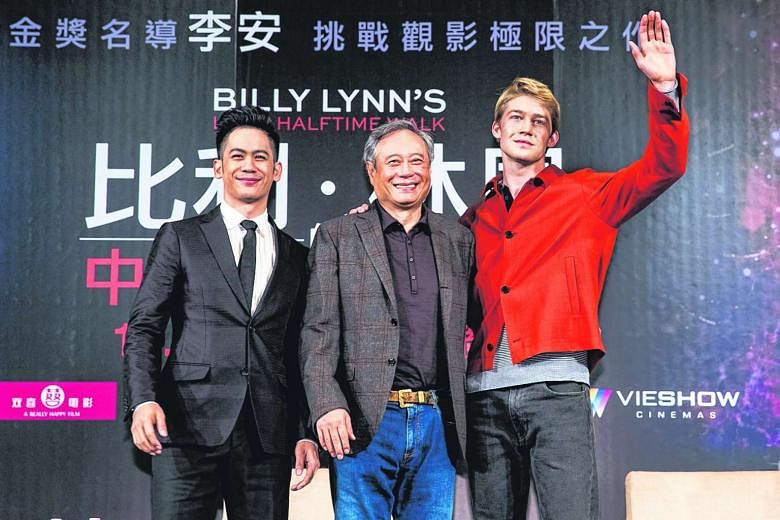The drama Billy Lynn's Long Halftime Walk examines the notion of courage through the actions of a soldier in war, juxtaposing what actually happened with a celebratory media tour.
For director Lee Ang, 62, making the film is one of the bravest things he has ever done. He made it in a groundbreaking format of a high frame rate of 120 frames per second, at 4K and in 3D.
The term 4K refers to a horizontal resolution of 4,000 pixels and vertical resolution of 2,000 pixels. The most common screen resolution today for television sets is 1,080p or 2.1 megapixels, which means that 4K is much sharper.
The frame rate refers to the number of consecutive images, called frames, displayed in one second. The current standard is 24 frames per second, which produces the illusion of moving pictures.
Director Peter Jackson made The Hobbit trilogy (2012-2014) at a high frame rate of 48 frames per second, and the decision was derided by critics.
The Hollywood Reporter had said: "The print, while striking in some of the big spectacle scenes, predominantly looked like ultravivid television video, paradoxically lending the film an oddly theatrical look, especially in the cramped interior scenes in Bilbo Baggins' home."
Little wonder that Lee is apprehensive.
The effect, he says, is to make someone watching the film feel as though he has gone through the exact journey as Billy, so that "you empathise deeply and you feel emotions more sharply".
Billy Lynn was screened for the media in Taipei last week at 120 frames per second, 4K and 3D.
It certainly looks and feels different from an ordinary movie. It is as though one is watching ultra-sharp images akin to those in a video game, perhaps, rather than the more comforting familiarity of film.
And the hyper-real effect is a little distracting as one's brain tries to process the images and reconcile them with the expected experience of watching a film.
There are only five cities, including New York and Beijing, capable of screening Billy Lynn in that format.
Singapore will be screening the film only in standard release of 2D at 24 frames per second as local cinemas do not have the capability to support the high frame rate of 120 frames per second.
Lee says the film has seven or eight different versions in terms of technical specifications, adding: "With each version, I remade the film, adjusting everything from the colouring to the lighting."
To some extent, he is bemused by all the attention on the technicalities.
He says: "I wouldn't separate the film from the technology.
"Movies themselves are a technology. More than a hundred years ago, no one had watched movies before. Our brains are constantly adapting and adjusting and learning anew."
The visionary in him adds: "I hope that the relationship between audiences and films can grow closer and that films can think bigger. As we forge ahead, I hope that audiences can grow with us, that's my heartfelt wish."
Boon Chan


